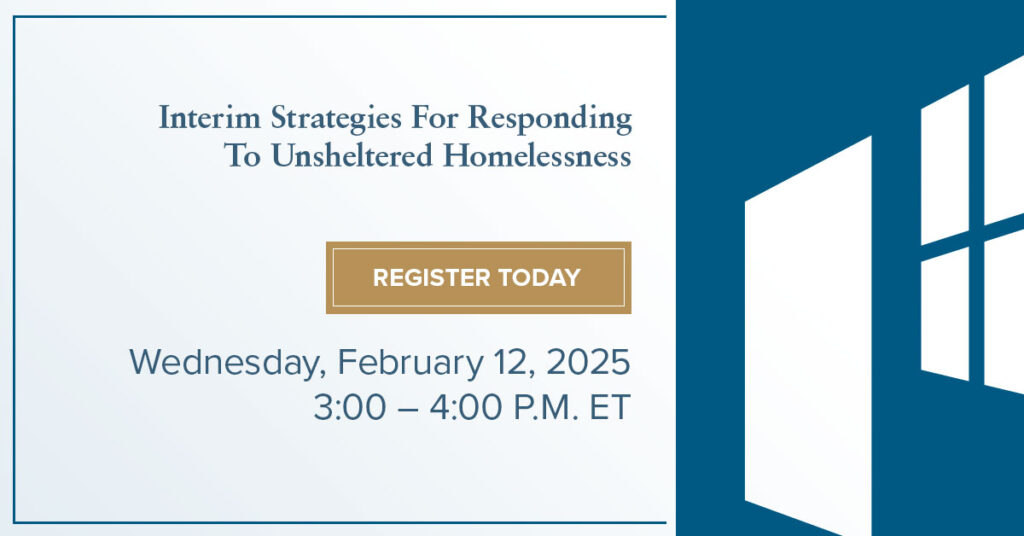Elected leaders are under pressure, often opting for tactics that make homelessness less visible, but don’t actually address the problem. These tactics include a rash of laws that fine, cite, arrest, and jail people experiencing homelessness, even if there is no shelter or housing available in the community.
Permanent housing— paired with services and supports tailored to the household’s needs and preferences—remains the only real solution to homelessness. But in the midst of a severe affordable housing shortage and an inadequate healthcare system—both challenges that will not be solved overnight—the Alliance recognizes that communities may need to consider other temporary strategies to address unsheltered homelessness while working towards long-term solutions.
In recognition of this need, the Alliance recently released Interim Strategies for Responding to Unsheltered Homelessness, guidance designed in partnership with advisors with lived experience and targeted at Continuum of Care planning leadership and local decision-makers.
Meeting Both Short-Term and Long-Term Needs
As communities consider how to respond to unsheltered homelessness in the short term, they may consider creating non-permanent structures and spaces such as tiny homes, safe parking sites, or self-governed supported encampments. When part of an evidence-based, housing-focused strategy, these tactics have the potential to offer temporary programming that is both responsive to public pressure, while also prioritizing the safety, autonomy, and health of people experiencing unsheltered homelessness as permanent housing is secured. Without a broader strategy, however, they can be problematic.
Infusing Effective Practices into All Interventions
While the Alliance does not endorse any specific interim strategy, the following guidance seeks to provide a baseline of the components that communities should consider during planning, design, and implementation discussions for these types of strategies. For example:
- Temporary Nature: Communities should include a sunset plan in the planning and design process on the front end. This will help the community recognize the site as temporary; ultimately, the need for such sites will decrease as housing opportunities are increased.
- Lived Experience: Communities should involve people with current and prior experience of unsheltered homelessness in the planning and design process of these interim solutions. The inclusion of people with lived experience helps to ensure that these solutions actually meet the needs and preferences of the community for which they are intended.
- Housing-Focused Strategies: Communities should ensure that the goal for every resident is permanent housing. Whenever possible, people should be connected directly to housing from wherever they are currently residing. However, when housing is not immediately available, these accommodations may be offered as a temporary place for people to choose to reside while pursuing permanent housing.
Moving Forward
To continue this conversation, the Alliance invites you to join our upcoming webinar on interim strategies on Wednesday February 12, from 3-4pm EST. Register here.
We also welcome you (by emailing avandenberg@naeh.org) to reach out and offer us feedback on the guidance, including through letting us know:
- What would be the most helpful topics that subsequent guidance can address?
- What are emerging effective community practices in this space? Are there any specific protocols, agreements, or guidance in your community that you can share with us?
- Where are there policy, practice, and research gaps when considering interim strategies?
While the increased attention on unsheltered homelessness has driven a concerning push towards law enforcement-led approaches, this crisis also presents us with an opportunity to double down on ensuring we can meet peoples’ needs both in the short and long-term.


